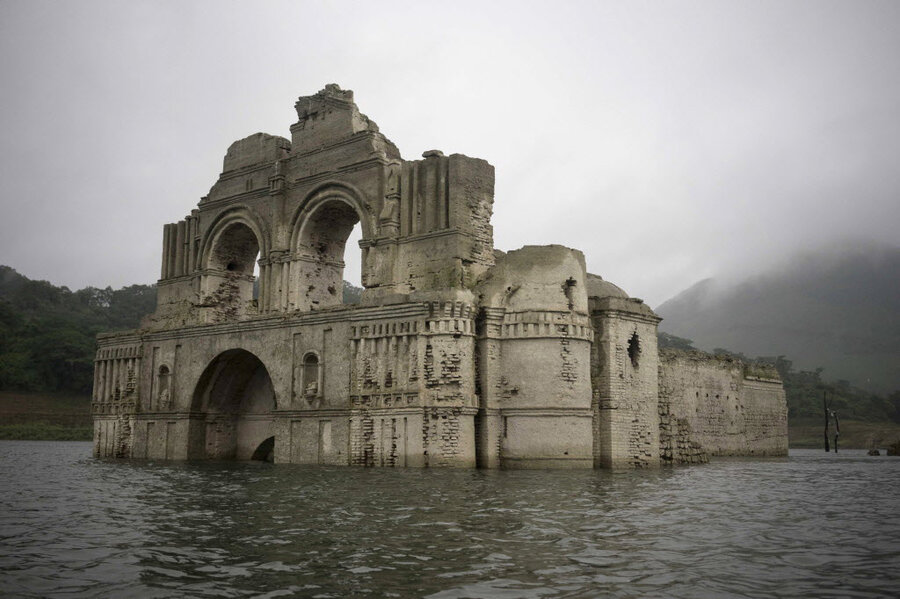Out of the depths: Ruins of 16th century church emerge from Mexican reservoir
Loading...
Drought has affected the southern Mexican state of Chiapas so severely that water levels on the Grijalva river have dropped by more than 80 feet, revealing the remains of a 16th-century church not visible above the waterline otherwise.
Once part of the Quechula village that submerged underwater after the construction of a dam in the 1960s, the church known as the Temple of Santiago was built by Friar Bartolomé de la Casas and his group of monks when they came to the region indigenous to the Zoque people in the mid-16th century.
Carlos Navarete, an architect who helped Mexican authorities in analyzing the ruins, tells the Associated Press that the church was related to the nearby monastery of Tecpatan, which was founded in 1564. The architectural similarities, he says, suggest that the structures were built by the same person at the same time.
"The church was abandoned due the big plagues of 1773-1776," Mr. Navarete told the AP. "It was a church built thinking that this could be a great population center, but it never achieved that."
"It probably never even had a dedicated priest, only receiving visits from those from Tecpatan," he added.
As a fisherman, Leonel Mendoza spends his days in the Nezahualcoyotl reservoir, encircled by mountains and forests. But since the emergence of the church in the receding waters, he’s taken on another job: ferrying tourists to see the mysterious remains.
"The people celebrated. They came to eat, to hang out, to do business. I sold them fried fish. They did processions around the church," Mr. Mendoza says.
Some visitors even climbed the remains, which measure about 183 feet long, 42 feet wide, with walls rising 30 feet tall and a bell tower reaching nearly 50 feet.
The last time the church was revealed in the reservoir was 2002, when the water was low enough for visitors to walk inside.
This report contains material from the Associated Press.








